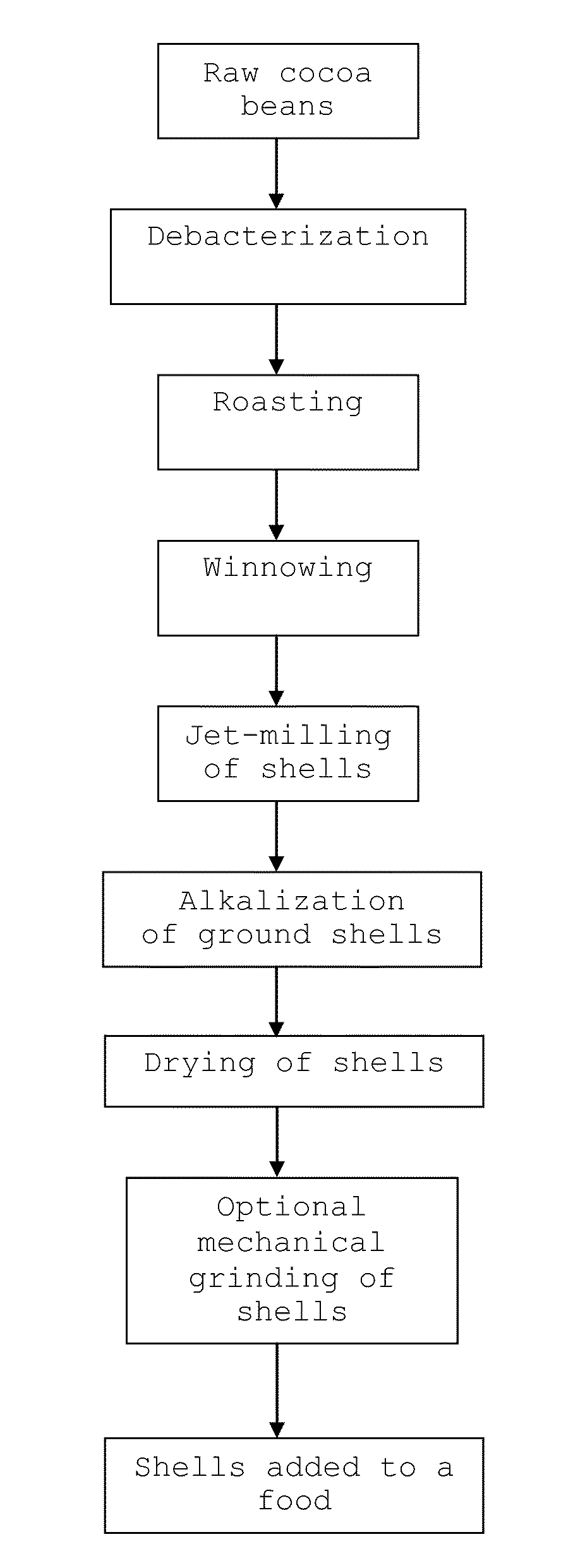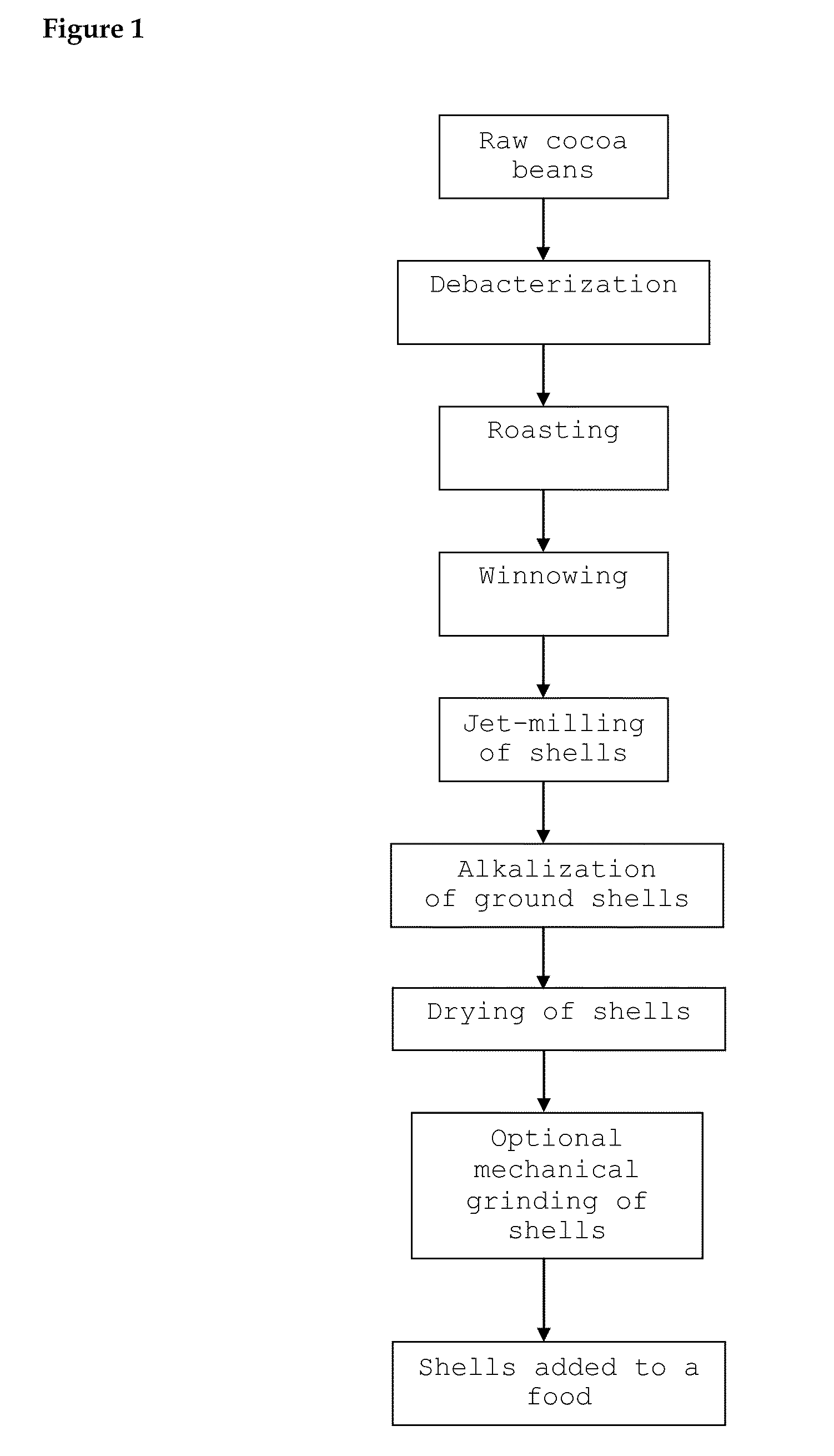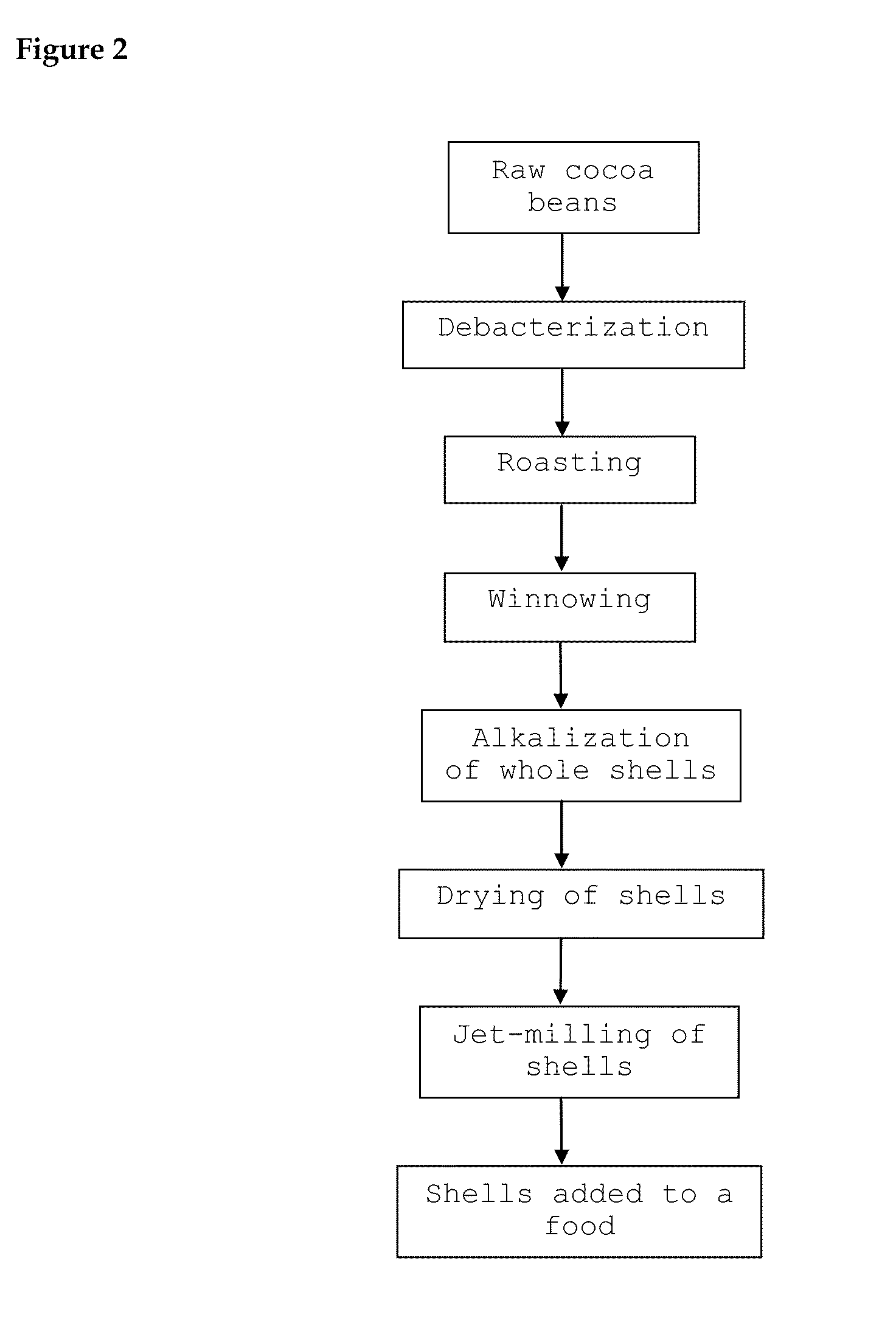Food Comprising Alkalized Cocoa Shells And Method Therefor
a technology of alkalized cocoa and cocoa shells, which is applied in the field of food comprising alkalized cocoa shells, can solve the problems of high processing cost of cocoa nibs, inducing bitter aftertaste in foods, and energy and equipment, and achieves good chocolate taste, reduce fat content, and increase the fibre content of food
- Summary
- Abstract
- Description
- Claims
- Application Information
AI Technical Summary
Benefits of technology
Problems solved by technology
Method used
Image
Examples
example 1
Cocoa Beverage Formulation
[0079]Cocoa beans from the Ivory Coast region were roasted at 115° C., and the shells and nibs of the beans were separated by conventional winnowing. The roasted whole cocoa shells were then ground using a jet-milling apparatus at a temperature of 15-21° C. and a pressure of 6.9 bar. Shells were supplied into the apparatus at a rate of 75 kg / hr and the flow rate of the compressed air in the apparatus was 27-35 m3 / min. The ground cocoa shell particles had a D90 value of 24.50 μm and a pH of 5.05.
[0080]8 kg of the roasted ground cocoa shells were fed into a Barth alkalizer and heated for 20 minutes to a temperature of 90° C. An aqueous solution of 295 g of sodium hydroxide in 2800 ml of water (4.05 mass % NaOH based on the mass of the cocoa shells as dry and de-fatted cocoa shells, and 35 mass % water based on the mass of the cocoa shells) was injected into the cooker over a period of five minutes and the reaction mixture heated to 134° C. under a pressure of...
examples 2 and 3
[0083]A cocoa beverage was produced in the same manner as described in Example 1, except that the amount of alkalized cocoa shells and the amount of cocoa powder in the cocoa beverage formulation were altered, as shown in Table 1 below.
example 4
[0084]A cocoa beverage was produced in the same manner as described in Example 1, except that the cocoa shells were alkalized using an aqueous solution of 295 g of ammonium sesquicarbonate in 2800 ml of water (4.05 mass % NH2CO2NH4.H4HCO3 based on the mass of the cocoa shells as dry and de-fatted cocoa shells, and 35 mass % water based on the mass of the cocoa shells).
[0085]The alkalized cocoa shells had a D90 value of 31.50 μm. The pH of the alkalized shells was 5.65 and the water content of the shells was 4.00 mass % based on the mass of the alkalized shells.
PUM
 Login to View More
Login to View More Abstract
Description
Claims
Application Information
 Login to View More
Login to View More - R&D
- Intellectual Property
- Life Sciences
- Materials
- Tech Scout
- Unparalleled Data Quality
- Higher Quality Content
- 60% Fewer Hallucinations
Browse by: Latest US Patents, China's latest patents, Technical Efficacy Thesaurus, Application Domain, Technology Topic, Popular Technical Reports.
© 2025 PatSnap. All rights reserved.Legal|Privacy policy|Modern Slavery Act Transparency Statement|Sitemap|About US| Contact US: help@patsnap.com



